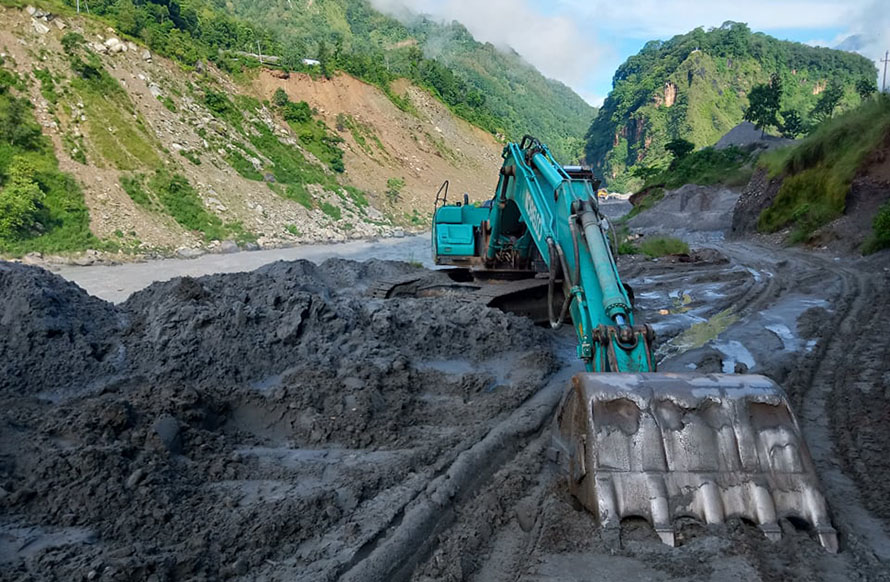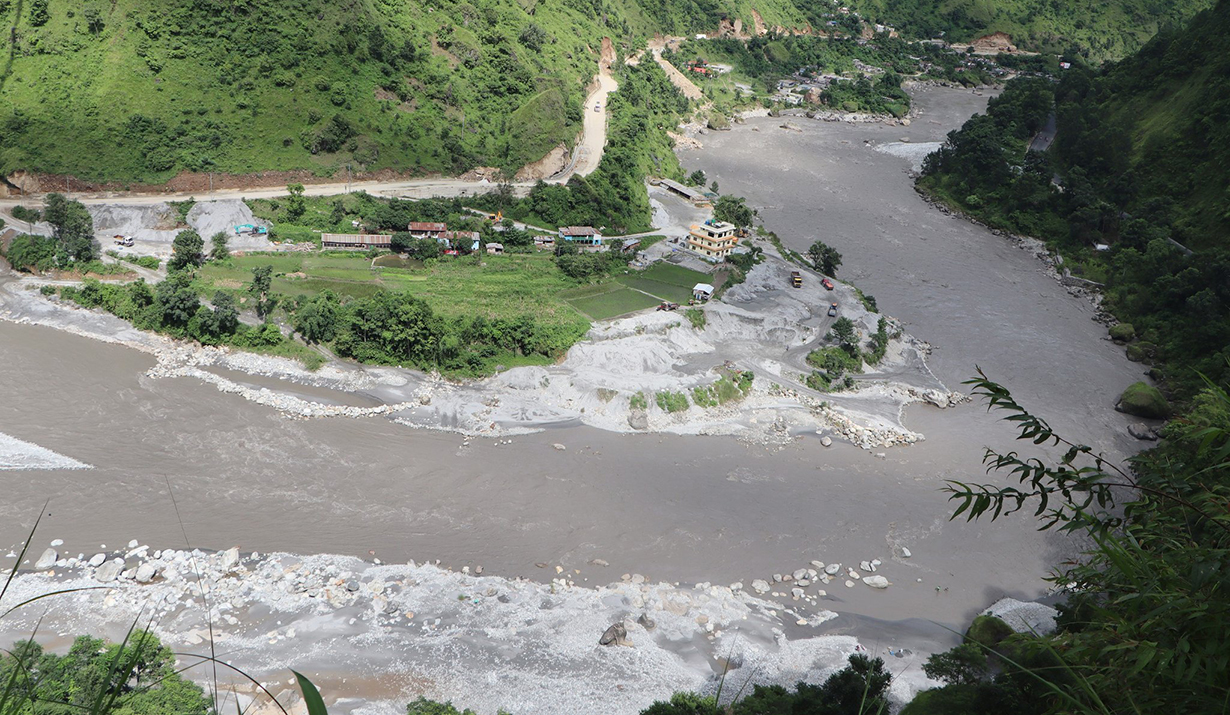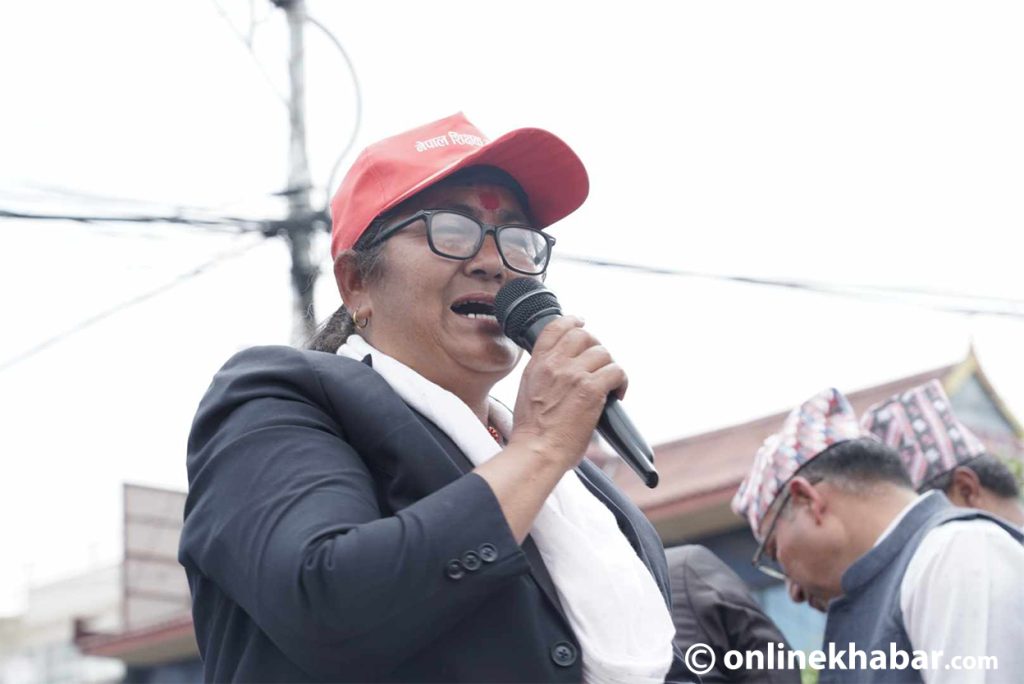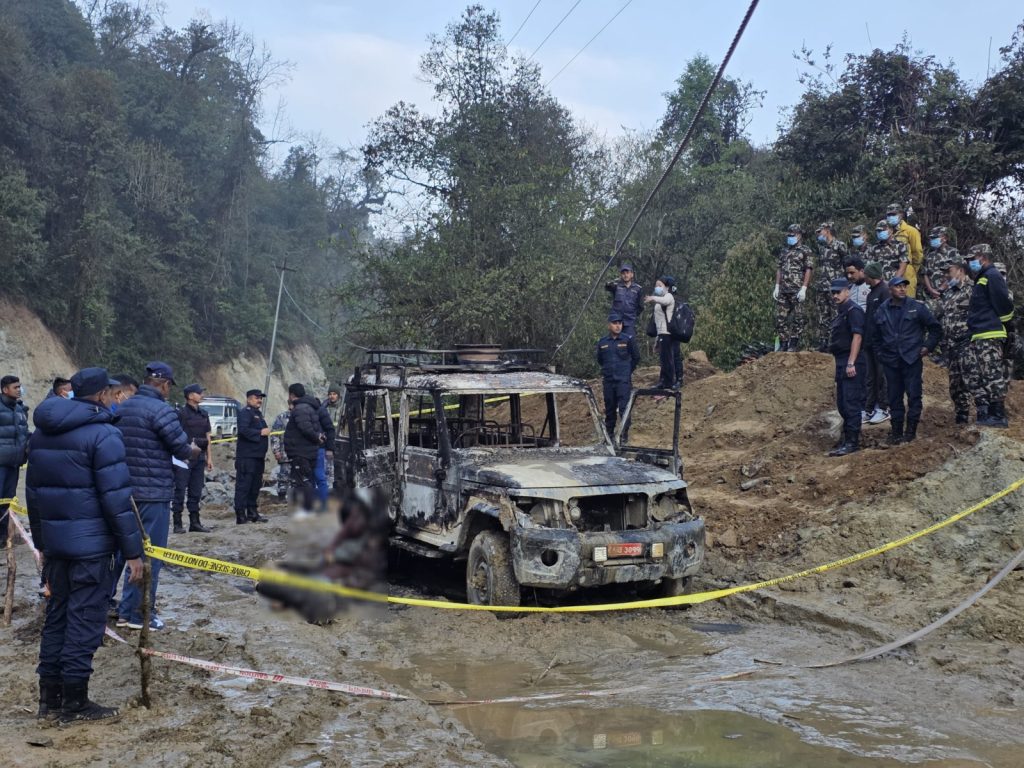
The government has introduced a bill for “management and regulation of construction materials” in the House of Representatives. This bill aims to maintain the current guidelines, procedures, and practices related to stone, gravel and sand mining along with its distribution and sales.
With the bill, the government has attempted, indirectly, to enable the export of stone, gravel, and sand, while also suggesting more lenient measures for addressing illegal mining. The government has submitted this bill to the House of Representatives to facilitate the operation of stone and gravel sand mines and promote the export of construction materials produced from these mines.
Environmental experts have consistently opposed Nepal’s government policy of exporting stones, gravel, and sand, and a bill has been introduced in the House to stop such exports if the government decides to discontinue it.
Meanwhile, the introduction of the bill seemingly intends to strike a balance between development and environmental concerns and establish a legal framework for the efficient management and regulation of illegal crushers and construction-related materials.
Explained: Nepal’s plan to export pebbles and sand ‘at the cost of Chure conservation’
Understanding the bill

This proposed bill, put forth by the Ministry of Federal Affairs and General Administration, allows the government to identify mineral-rich areas on government and public lands for mining, extraction, and processing of minerals intended for construction purposes.
Nepal is a developing country, and like others, rapid urbanisation is taking place in various places in the country. To fulfil the high demand for sand and sediments needed, illegal mining is taking place throughout the country.
Therefore, under the proposed bill, the identification of these areas will require geological and environmental studies. The government, following the proposal, plans to establish four zones within the mineral sector and formally announce this in the national gazette.
Simultaneously, the bill also includes a provision stating that a mineral zone cannot be designated within a specified distance from the mentioned areas.
The Chure region, including national parks, wildlife reserves, protected zones, buffer zones, Ramsar sites, botanical gardens, forested areas, protected watersheds, international border points, densely populated urban zones, as well as sites of religious, cultural, and archaeological significance, densely populated urban zones, and sites of religious, cultural, and archaeological significance, is subject to protection as deemed necessary by the federal government.
The bill, however, also proposes that in the case of disaster-prone areas, the extraction of construction materials may be excavated as per government regulations.
Additionally, it outlines that anyone wishing to extract and sell construction materials from their private land must submit an environmental impact study report and obtain approval from the local government. Before obtaining such a permit, companies involved in this sector must be registered as an industry under the provincial legal system.
The proposed bill suggests penalties for illegal mining without obtaining the required permit or industry registration, imposing fines ranging from Rs 500,000 to Rs 1 million. Depending on the output, the bill also mentions, that one will be obligated to pay a royalty as well as administrative expenses to the local government.
Nepal’s illegal mining problem

The government is making efforts to grant additional time to businesses involved in illegal mining to transition towards legal compliance as soon as possible. It is inclined to extend this opportunity to industries that have operated for nearly a decade without undergoing any renewal or reconsideration.
The proposed bill outlines the requirement for Nepal’s crusher industries to register with the Ministry of Industry at the provincial level. The bill also suggests renewing the permits, for those whose registration has lapsed, and renewing their registration with the provincial ministry within six months of the Act’s enactment.
The bill also outlines the requirement for the crusher industry to disclose details regarding its sources of construction-oriented mining and collection at the local level, along with publishing annual financial statements and sales volumes.
Additionally, the bill suggests that in cases where the illegal crushers and their licensees do not comply with the specified standards and conditions, the local authorities have the authority to prohibit mining, collection, processing, and sale activities.
These businesses, however, will be granted a grace period to correct their status within one year of the Act coming into effect. In cases of non-compliance, the local government will recommend the provincial government to take action.
The bill proposes fines between Rs 500,000 to Rs 1 million for operating unregistered or unrenewed crushers illegally. It also suggests penalties, including a possible five-year imprisonment and a fine of up to Rs 1 million, for individuals violating the regulations.
Following the regulations established by the local governments, they are authorised to levy a service fee based on the sales volume of construction materials. This service fee will be deposited into the local government’s dedicated fund.
Of the total revenue generated from the sale of construction materials, service charges, and taxes, 60 per cent will be allocated to the respective local governments, while the remaining 40 per cent will be given to the respective provincial governments. However, before distributing this revenue, the local government is required to allocate 10 per cent of the collected amount for conservation, management, monitoring, and administrative expenses.
The revenue collected from mining activities, including national parks, protected areas, and forest zones, will be distributed among the federal, provincial, and local levels. Importantly, no taxes can be imposed on the transportation of construction materials to various local levels and provinces. The bill stipulates that this revenue should be allocated for social development purposes, such as enhancing healthcare facilities and educational institutions in the regions.
Furthermore, the bill suggests the creation of a monitoring committee at the district level which will determine market prices for construction materials and oversee illegal mining operations.
More power to the local level

The bill has proposed a different arrangement in the case of extraction near river shores. It dictates that the local level(s) must protect the river and areas near it that fall within its geographical area, and they can make specific laws for protection according to federal law.
Under this provision, the contractor can be selected and employed through open competition. The bill also proposes that local authorities have the option to collect construction materials within their jurisdiction by constructing dams to regulate the flow and accumulate the required quantity. This work can also be done at the local level through public-private partnerships.
The bill necessitates local executive approval for river material extraction, limiting quantities to approved environmental study reports. It advocates for a collaborative mechanism in collecting, transporting, and selling river materials from multiple local border areas, including a joint mechanism for assembling and selling items extracted from rivers. The bill also outlines procedures for material collection routes, vehicle record-keeping, and permit issuance, and includes provisions for safeguarding water life.

The bill proposes prohibiting excavation within one kilometre downstream and 500 meters upstream of areas with road bridges, suspension bridges, and man-made structures. Additionally, it states that the extraction of construction materials from rivers is banned between mid-June to mid-August. The bill also states all the standards set by the environmental study report should be fully complied with, to extract construction-oriented materials.
Along with that, it also addresses the necessity of determining the load-carrying capacity of roads used for transporting construction materials and underscores the need for corrective action if the permissible load limit is exceeded. Additionally, the bill highlights the responsibility of local authorities in determining the minable quantity within mineral-rich areas and overseeing their control at the local level.
The bill grants the local level authority to prohibit or impose quantitative limitations on illegal mining businesses and the export of construction materials to foreign destinations if the government identifies challenges in managing domestic demand or observes a significant environmental impact.
In cases where these standards are not adhered to, the bill proposes that the Chief District Officer can impose fines.
Moreover, the bill indicates that the federal government will set different criteria for the Hilly, Madhesh, and Terai regions. It further states that the federal government has the authority to designate certain areas, particularly those of importance or sensitivity, as prohibited zones to prevent the extraction of construction materials.
It ensures that the export of stone, gravel, and sand will remain accessible. However, it includes a provision specifying that information will be published in the gazette only when the government deems it necessary. The bill further suggests that the government will define the quality standards for stone, gravel, and sand, and official notifications regarding these standards will be issued through the gazette.
This story was translated from the original Nepali version and edited for clarity and length.






















